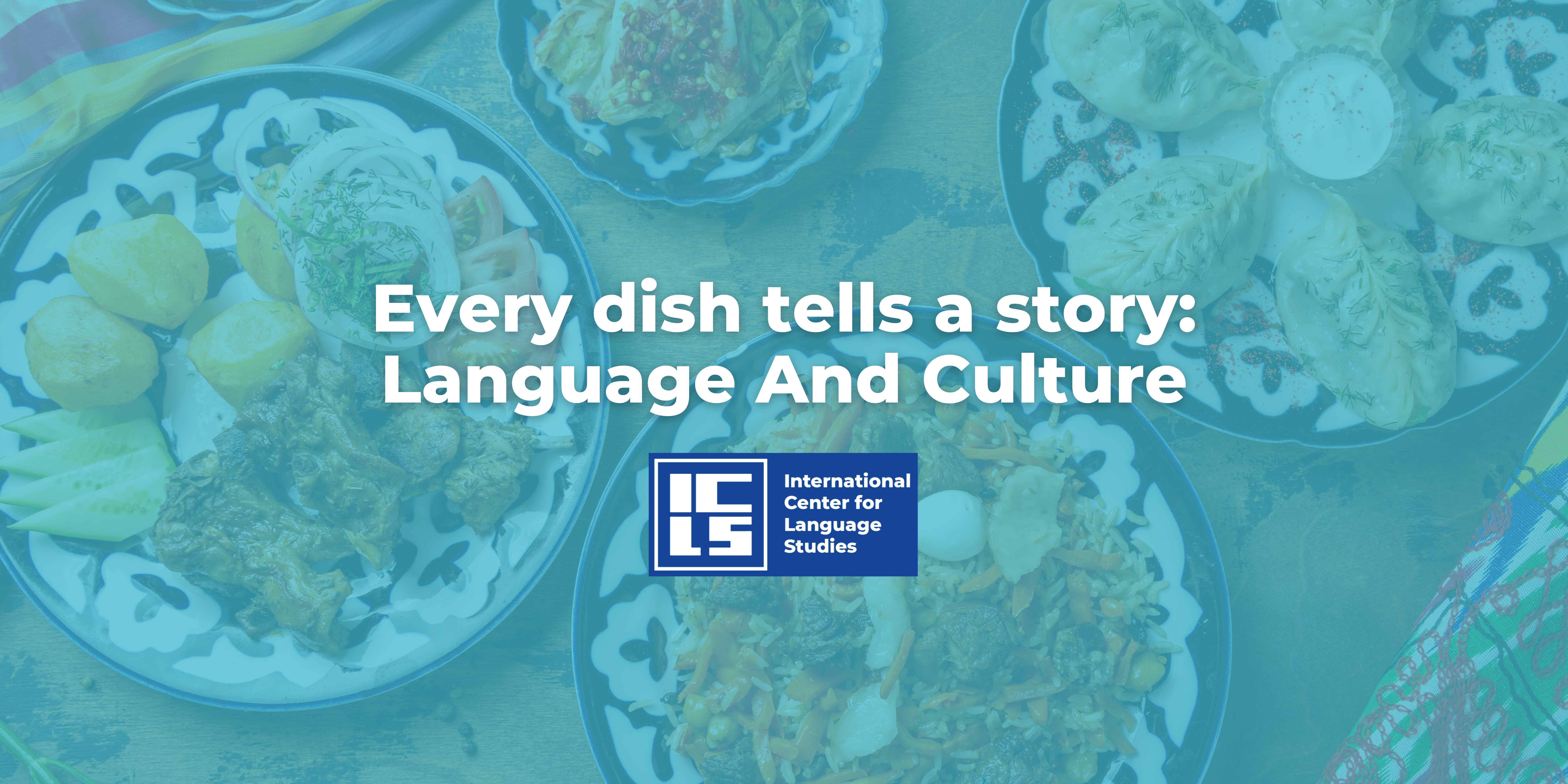Every dish tells a story: Language And Culture

“In the food of every country is the story of that country. Every dish tells a story.” Stanley Tucci
For those of you reading this post who are unfamiliar with the name Stanley Tucci, he is a multi-award-winning American actor of Italian ancestry. Food and wine loving Tucci tasted culinary success with his first cookbook, The Tucci Cookbook in 2012, is co-owner of the Finch Tavern restaurant in New York and in 2021, hosted the culinary travel series “Stanley Tucci: searching for Italy”, following Tucci on a nostalgic food tour of Italy.
So, in a whirlwind tour of a handful of countries across the globe, let’s take a look at his claim that ‘in the food of every country is the story of that country. Every dish tells a story’
England
When thinking of emblematic English food, many peoples’ minds would turn to fish and chips and mushy peas. Not the healthiest of meals, the fish, usually cod, is fried in batter and chips (a point of difference in language here: English chips are known as French Fries in the USA). Both fish and chips are fried in large oil vats. Small wonder the UK has one of the highest per capita incident rates of coronary artery disease in the modern world!
Accompanying the fish and chips are the famous mushy peas: mature green peas soaked overnight in water and bicarbonate of soda, then rinsed, brought to the boil, and simmered until they become ‘mushy’. Almost every town in England has a fish and chip shop, or ‘Chippie’ as they are colloquially known, and fish and chips remain a hugely popular takeout meal. Until the late 1970’s fish and chips take-outs were served in newspaper. That’s right. Old print paper! The food standards board eventually took a view on this and banned the practice several few decades ago. Many older Brits still to this day complain that their fish and chips tasted better in the greasy newspaper in which it was wrapped! Perhaps the newspaper was the healthiest element of the dish!
So, what does fish and chips say about Brits? That they have no taste? No tastebuds? Clogged arteries? Maybe all of those things. But the history of the dish is quite interesting. The potato was introduced to England from the New World in the 17th century by the explorer Sir Walter Riley and chips (or fries) became a cheap, staple diet especially in the industrial north of the country, by the mid-19th century, they’d spread south. England has always been a seafaring nation and with the advent of the steam trawler, fish were being caught and fried in batter in the east end of London from the 1830’s. The fusion of fish and chips was first referred to in the Charles Dickens novel Oliver Twist when he referred to a “fried fish warehouse.”
Spain
The first dish that comes to mind when we think of Spain is almost certainly Paella. Paella originated in the city of Valencia on the Mediterranean coast. Traditional Valencia Paella is thing is not simply a combination of chorizo rice and shrimps! Oh no. There’s so much more to Valencian paella than that. Valencia paella had its birthplace inland, where the rice paddies are found. The pan (paella) was placed over an open outdoor fire, and very often snails, rabbit or, if available, chicken was thrown into the dish, alongside large local beans called garrafo. You will still find this dish served in many local restaurants around the city together with its seafood counterpart. Paella, like many Mediterranean dishes, is incredibly nutritious and delicious, fresh, and filling.
France
The French have gained a reputation for being a little bit sniffy about food! Haute cuisine (or high cooking) originated in France in the 17th century, but at this time in history, only the privileged could eat it as haute cuisine required complex ingredients and rich, decadent sauces. From the 1960’s, France has been more closely associated with nouvelle cuisine which uses natural ingredients and strong marinades for the meat, based on regional variants that offer a minimalist approach to provide scrumptious and imaginative pairings of foods. Sophistication is a key element of nouvelle cuisine, and the French are widely regarded as sophisticated people!
India
How can you have a national dish in a country of 1.4 billion people? Due to the huge diversity of regions and cultures associated with each one, the government declared that India has no such thing as a national dish. Nonetheless, the majority of Indians consider that Khichdi is as close as it gets to such a thing. Khichdi is essentially comfort food. A simple dish using rice and lentils that’s super healthy, and nutritious! In a relatively poor nation such as India, it’s no small wonder that such a simple, healthy, inexpensive dish should be so universally popular. Indian food is famously for its wide abundance of spices. There’s a good reason for this. Spices prevent food from spoiling and food spoils much quicker in hot climates such as found in India. Bacteria and other pathogens cannot survive in hot spices!
Italy
Italy is renowned worldwide for its wonderful pasta and pizzas. But Spaghetti Bolognese, the dish most closely associated with the country, and which has achieved a popularity perhaps unparalleled by any other food across the world, has a certain notoriety in Italy itself. In Bologna, the supposed birthplace of the dish, you won’t find Spaghetti Bolognese on any menu in any restaurant across the city! In 2019, the Mayor of the city declared Spaghetti Bolognese to be “fake news”, causing a raging controversy that was highlighted in an article in the New York Times. “It is strange to be famous across the world for a dish that isn’t ours!” the Mayor went onto say. Truth is that in Italy any tomato and meat-based sauce is known as ‘Ragu’ in Italy, and it’s commonly served with tagliatelle, and never spaghetti! Buon appetito, Mr Tucci!
Conclusion
We believe that culture is an essential component of language learning and add cultural topics to all our foreign language classes. ICLS has provided language training since 1966. Our clients include individuals, government agencies such as the FBI, USAID, the Foreign Service Institute, and organizations such as the Pan American Health Organization, the IMF, and the World Bank, to name a few. With over 80 languages to choose from, a corps of highly skilled and trained language teachers, and in-house curricula, your language learning journey is off to a great start when choosing ICLS. Explore our private and group language classes to find a program best suited to your needs.


